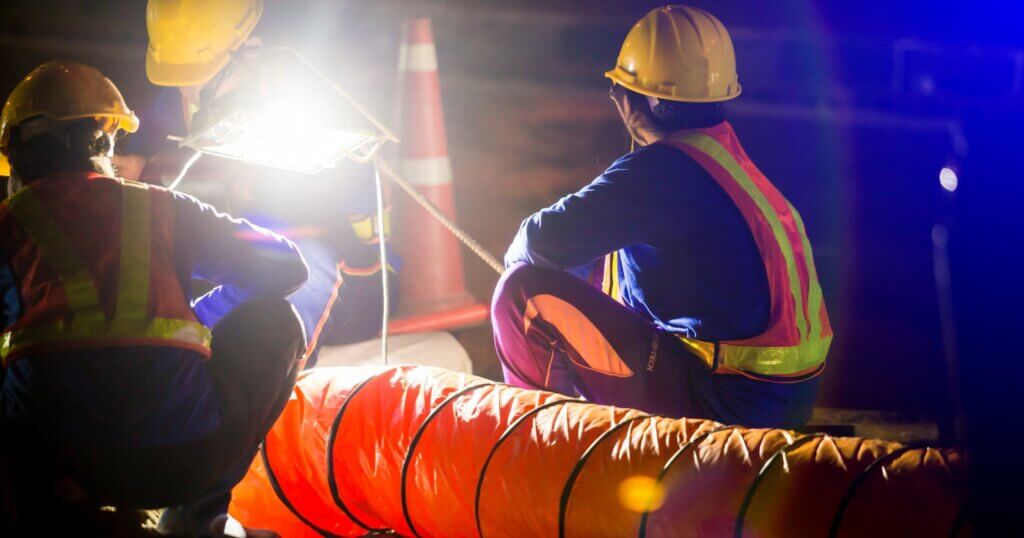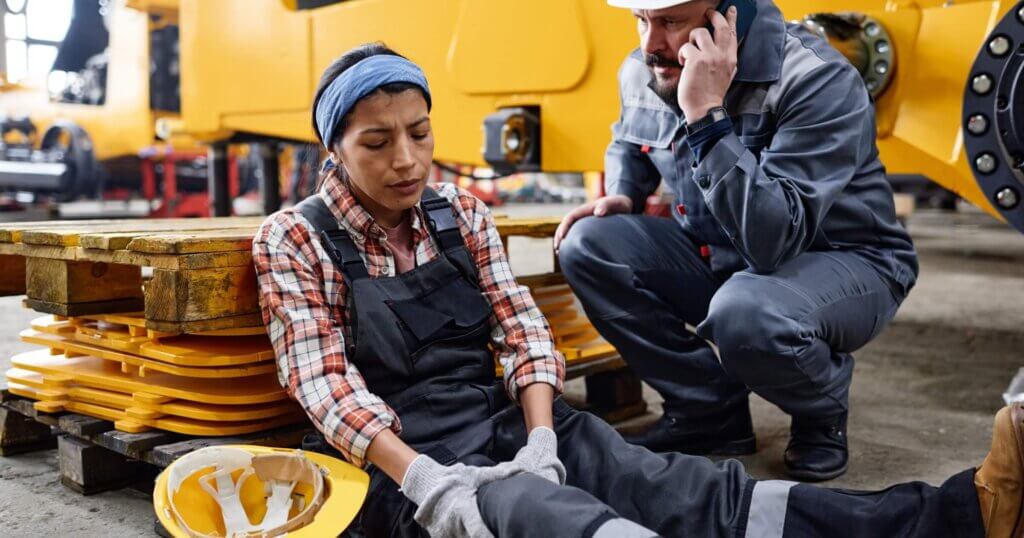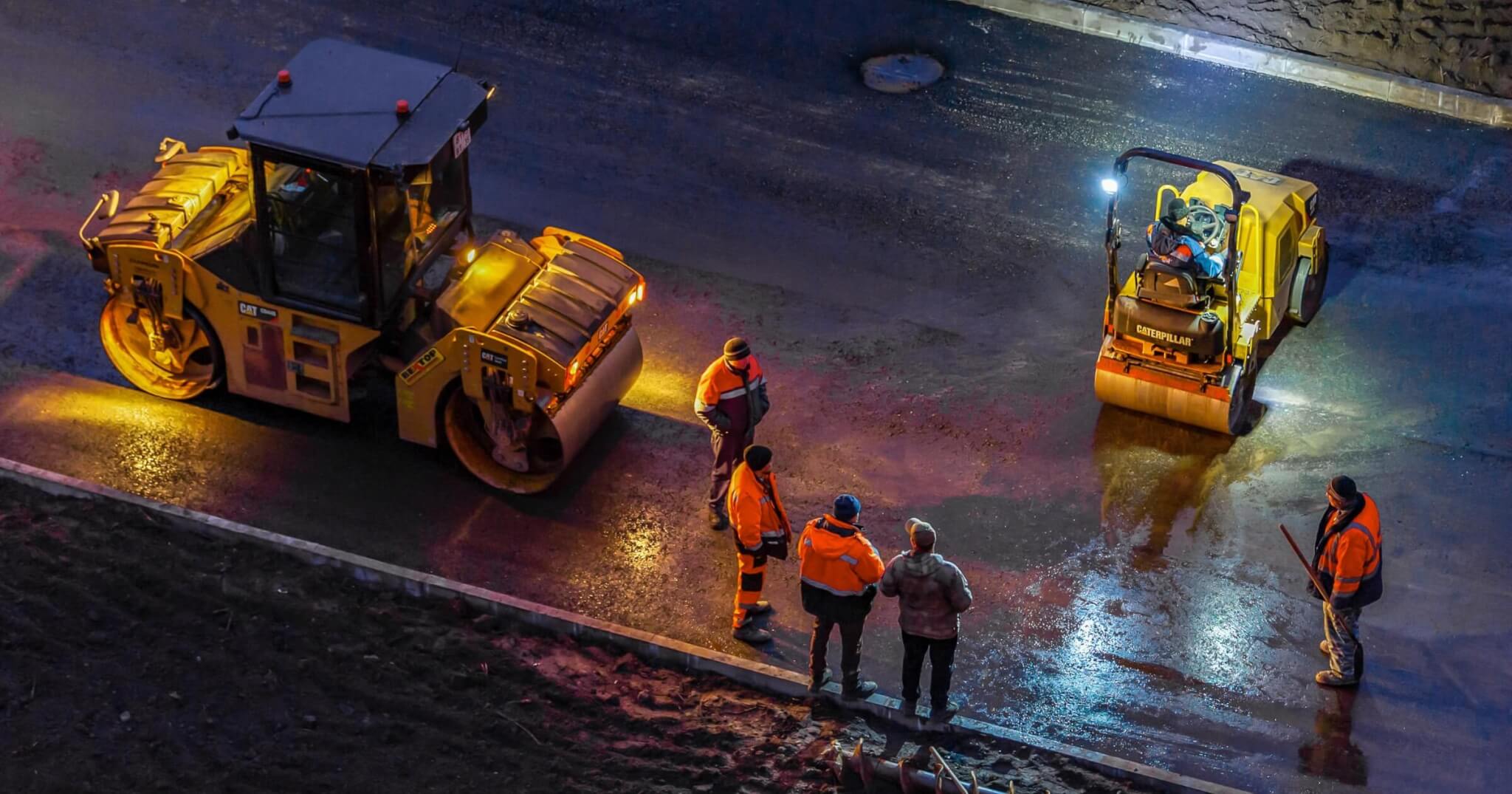Working shifts is part of the job for many tradespeople, especially in construction, but the long-term effects on health are serious and often overlooked. Disrupted sleep, higher risk of chronic diseases, and mental health struggles are common among workers doing night or rotating shifts. Fatigue also increases the risk of job-site injuries, particularly during overnight hours when alertness is at its lowest. Over time, the irregular schedules can take a toll on relationships and family life. This article explains what shift work entails in the construction industry, its impact on workers’ health, and practical strategies to mitigate the associated risks.
Quick look
- Shift work in construction often includes night shifts, rotating schedules, and long hours.
- Fatigue, disrupted sleep, and slower reaction times increase the risk of injury.
- Long-term shift work is linked to heart disease, Type 2 diabetes, and mental health issues.
- Workers also report strained family life and difficulty maintaining a healthy routine.
- Solutions include better scheduling, adequate rest, adjustments to lighting, and employer-led wellness initiatives.
What is shift work in construction?
Shift work in construction refers to any schedule that deviates from the traditional 7 a.m. to 3 p.m. or 9 a.m. to 5 p.m. model. It often includes night shifts (working between 11 p.m. and 7 a.m.), early morning starts, split shifts, weekend work, and rotating schedules where workers alternate between day and night shifts on a weekly or biweekly basis. Some jobs also involve extended hours—10 to 14-hour shifts—common on remote or large-scale projects where crews are trying to compress the construction timeline.
These irregular hours are tough on the body. The human body is wired to be awake during daylight and sleep at night. Construction workers on night or rotating shifts are often forced to rest during daylight hours, which is more challenging due to outside noise, family responsibilities, and the lack of darkness. This mismatch between the body’s natural rhythm and work demands is what leads to health problems over time.
Why shift work is used in construction
There are several reasons why shift work has become common on job sites. In urban areas, bylaws often limit daytime construction due to noise complaints, resulting in early morning or nighttime work, particularly for concrete pours and roadwork. Large infrastructure projects—like hospitals, transit hubs, and commercial towers—may require 24/7 progress to meet public deadlines or private investment schedules. On some job sites, shifts rotate every few weeks to maintain progress without overworking a single crew.
Labor shortages are also forcing companies to become more creative with their scheduling. With fewer skilled workers available, some firms break a project into staggered shifts to stretch a smaller team across more work hours. This tactic may help meet deadlines, but it can be hard on workers, especially if rest periods aren’t carefully planned. For tradespeople juggling shift changes, long commutes, or back-to-back contracts, the strain builds quickly.
Health impacts of shift work on construction workers

Photo courtesy of https://www.shutterstock.com/
Disrupted sleep and fatigue
Shift work often disrupts normal sleep patterns. According to the CDC, workers on night or rotating shifts usually get 1 to 4 hours less sleep per 24-hour period than those on regular schedules. Inadequate sleep reduces concentration, slows reaction times, and raises the likelihood of on-site accidents. In construction, where even small mistakes can lead to serious injury, this drop in alertness becomes a major safety risk.
Fatigue also reduces physical recovery time. Construction is a physically demanding job, and if a worker doesn’t get enough deep sleep, their body can’t properly repair muscle tissue or manage inflammation. This makes it easier to get injured from repetitive motion or strain, even with proper PPE and lifting techniques.
Increased risk of chronic conditions
Working irregular hours increases the risk of several long-term health problems. The World Health Organization has classified night shift work as a probable carcinogen due to its impact on circadian rhythm. Studies also link shift work to higher rates of heart disease, Type 2 diabetes, and gastrointestinal disorders like ulcers and acid reflux.
These conditions develop partly because shift workers often eat at irregular times, rely on fast food, and skip exercise due to lack of time or energy. Hormones that regulate blood sugar, digestion, and metabolism also become disrupted when people stay awake at night. Over time, these disruptions add up—especially in construction, where physical wear and tear is already high.
Mental health challenges
Sleep loss, social isolation, and job stress all contribute to mental health issues among shift workers. Depression, anxiety, and burnout are more common in people working irregular hours, particularly those on rotating shifts, due to the constant change in their routine and the accompanying lack of sleep. A 2023 study found that rotating shift workers reported significantly higher depressive symptoms compared to day workers.
Construction workers already face barriers to mental health support, including stigma and lack of access. Add in a rotating schedule or constant fatigue, and the chance of someone seeking help drops even further. Isolation from family and friends, who are awake when the worker is trying to sleep, can exacerbate the situation, leaving the person feeling disconnected even when not on the job.
Higher injury rates and slower reaction times

Photo courtesy of https://www.shutterstock.com/
The risk of workplace accidents goes up during night shifts and extended hours. Fatigue impairs decision-making and reaction time, both of which are essential when working with power tools, heavy machinery, or at heights. The National Institute for Occupational Health and Safety found that injury rates are 20–30% higher during night shifts.
Longer shifts without enough rest between them also wear down physical coordination. A tired worker is more likely to trip, forget a step in a safety protocol, or misjudge the speed or weight of equipment. When working in high-risk environments, such as scaffolds, tunnels, or active roadways, even a brief lapse can have severe consequences.
Impact on work-life balance and family life
Construction workers who work shift work often struggle to maintain healthy relationships. When someone’s working nights or alternating between day and night shifts, it becomes hard to attend family events, help with kids, or even just have dinner at a normal time. Partners and children may feel like they’re living on a different schedule—and often, they are.
This disruption also affects mental and emotional well-being. Missed birthdays, school events, or weekend gatherings create a sense of guilt and frustration. Over time, it can damage relationships or contribute to feelings of resentment. Some workers end up choosing between taking the shift and staying connected to their home life.
Strategies to reduce health risks
Prioritize consistent scheduling
One of the best ways to support worker health is to avoid rapidly rotating shifts. When crews stick to a consistent day or night schedule, the body can adjust more easily. Employers should also avoid back-to-back shift flips, such as finishing a night shift and starting a day shift the next week, since this prevents the body from establishing any kind of rhythm.
Build in rest and recovery periods
Regular breaks during shifts and full rest days between them are critical. Taking short breaks every few hours can help prevent fatigue from building up, especially during overnight work. Longer recovery windows—at least 12–16 hours between shifts—give the body and brain a chance to recharge before starting again.
Improve job site lighting
Good lighting isn’t just about visibility—it helps regulate the body’s internal clock. Using bright, full-spectrum lighting on night shifts can help workers stay alert and reduce drowsiness. In break areas, installing dimmer lighting helps signal to the body that it’s time to relax, supporting better rest when the shift ends.
Promote better nutrition
Shift workers often rely on vending machines or fast food to fuel their bodies. Sites can support healthier eating by offering fridges for meal storage, access to microwaves, and even coordinating deliveries from healthy food trucks. Eating balanced meals at regular intervals helps regulate blood sugar and mood, making it easier to stay focused and energized.
Offer quiet, dark rest spaces
Providing access to nap rooms or quiet areas with blackout curtains and white noise machines can be a game-changer, especially during long shifts. While napping isn’t a replacement for sleep, even 20–30 minutes of rest can help to reduce fatigue and improve overall mood. Making this a normalized part of the workday supports both safety and morale.
Encourage hydration and limit caffeine intake
Water helps keep joints lubricated and prevents the sluggishness that can occur from dehydration. Workers should be reminded to drink throughout the shift—not just at the start. While caffeine can help with alertness, it should be limited later in the shift to avoid disrupting sleep after work.
Role of employers and project managers
Leadership plays a significant role in protecting workers from the health risks associated with shift work. Project managers can rotate crews fairly so no one gets stuck with a bad schedule indefinitely. They can also build more generous rest windows into the timeline, even if it means pushing a deadline slightly.
Companies can take it a step further by offering mental health support, subsidizing healthy meal options on-site, and checking in regularly with shift crews. Treating worker health as part of job performance—not just a personal issue—makes it easier to create safer, more sustainable work schedules.
Final thoughts
Shift work isn’t going away anytime soon in the construction industry, but the way it’s managed can make a significant difference. Better rest, smarter scheduling, and genuine support from leadership can help mitigate the damage it causes to the body and mind. If this article was helpful, check out related pieces on sleep and injury risk, disc herniation in the trades, and mental health resources. You can also read our guide to dealing with depression.
To stay updated on more construction health topics like this one, join our newsletter and get stories, tips, and research straight to your inbox.


